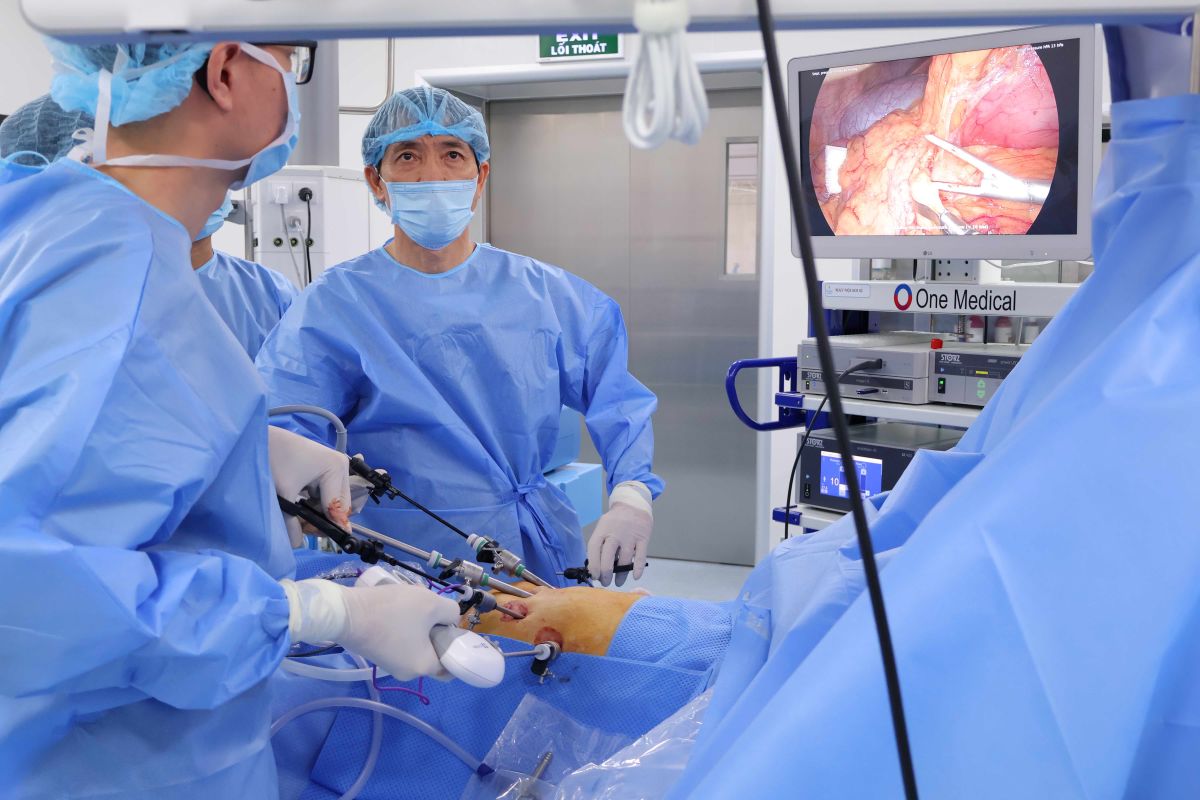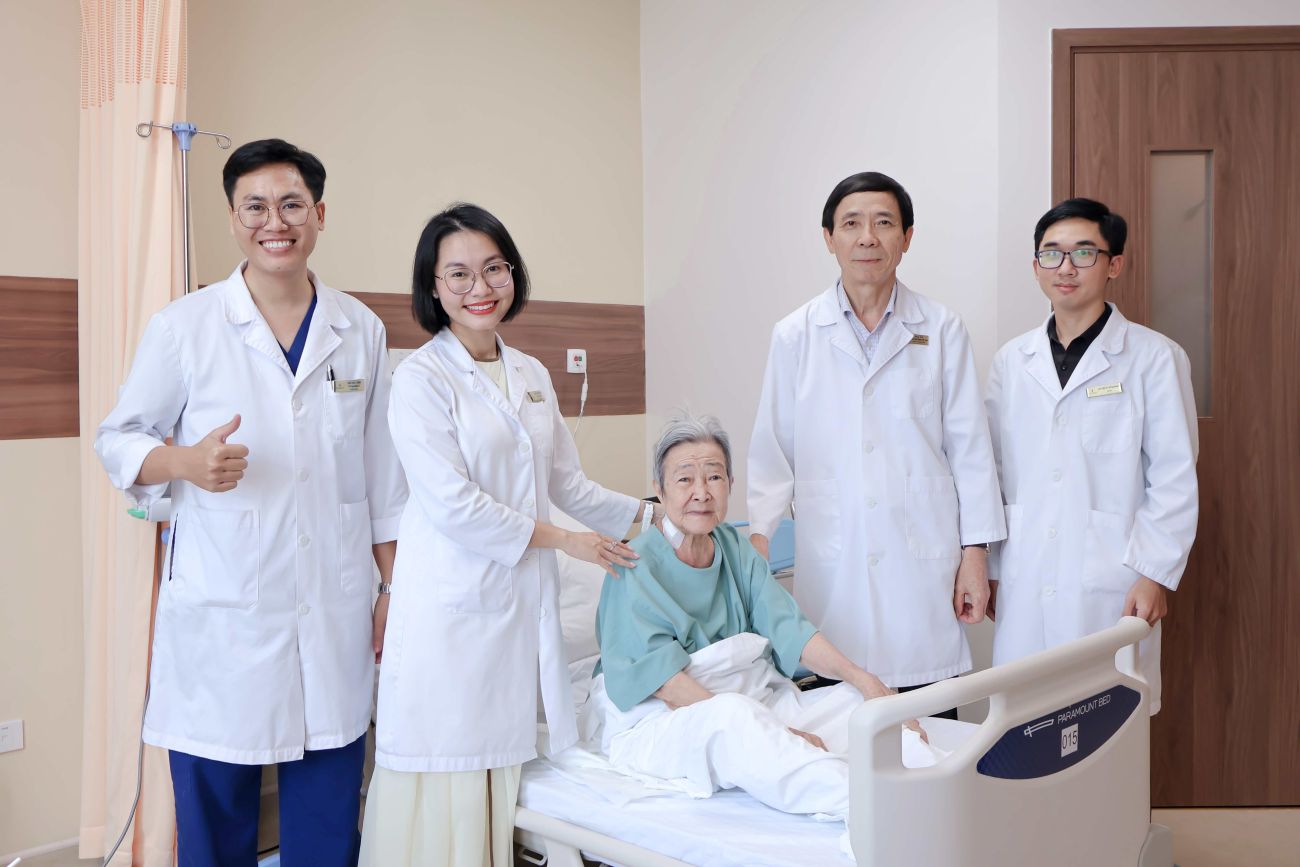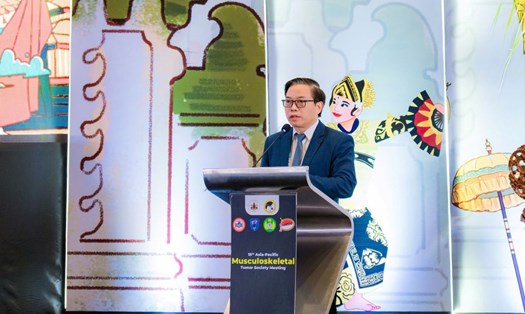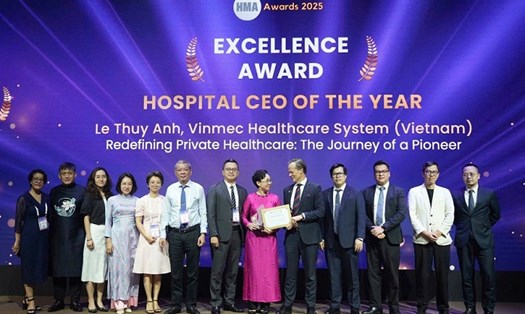Elderly patients with underlying diseases and cancer in critical locations
Ms. Le Thi Cung (80 years old, Can Tho) came to Vinmec Can Tho General Hospital for examination with indigestion and a dull appetite and pain in the epigastric region. The endoscopy results - gastric photosensity showed that she had stomach cancer in the taste buds - a location considered "deadly".
According to Associate Professor, Dr. Pham Van Nang - Director of the Surgery Center, Vinmec Can Tho General Hospital, taste bud cancer is one of the fastest and most dangerous stomach cancers. The tumor is located at the end of the stomach, adjacent to the duodenum, which is a part that plays an important role in bringing food down to the small intestine. When damaged, the tumor can easily narrow the taste buds, causing food to stagnate, causing patients to vomit continuously, become exhausted, and suffer serious nutritional loss. If not intervened promptly, the tumor can invade the liver cavity, then peritoneum, metastasize to the lungs, brain and cause death.
After comprehensively assessing the examination results, the medical team conducted a consultation and determined that the tumor had penetrated deep into the stomach wall, with the risk of metastasis. Therefore, the optimal treatment regimen chosen is endoscopic subastinal prosthesis to completely remove the tumor and prevent the risk of spreading.
For patient Le Thi Cung, the situation became more complicated when she suffered from two chronic underlying diseases: diabetes and high blood pressure at the same time.
Although endoscopic surgery is considered less invasive, performing it on elderly patients with multiple underlying diseases is always a big challenge. Underlying diseases increase the risk of heart attack, stroke, and cerebral hemorrhage during and after surgery, said Dr. Nang.
Therefore, before performing the surgery, the doctors consulted, analyzed the risk and discussed the response plan to help the patient's family understand, accompany and trust him. Only when receiving absolute consent from the family, the surgery was officially performed.

Optimal methods and treatment regimens are not wrong
For cases of taste buds cancer, cutting the tumor through the digestive endoscopy is impossible due to difficult location. If opting for open surgery, even more thoroughly, the level of invasion is large, especially dangerous for patients aged 80 and over with underlying medical conditions. In the situation of "dilemma", endoscopic subastinal prosthesis surgery becomes the optimal direction - a thorough and safest solution.
Associate Professor, Dr. Pham Van Nang explained: The challenge is not only cutting off the affected stomach, but also connecting the stomach and digestion to ensure absolute safety. In the elderly, organizational tissue is very fragile, and a single millimetre of connection can cause all efforts to fail.
Vinmec Can Tho team has established a "no errors" treatment process, focusing on 4 key pillars: less invasive endoscopic surgery; intensive anesthesia - resuscitation, proactive control of blood pressure, heart rate to prevent cardiovascular events, strokes; surgeons coordinate smoothly, operate continuously to ensure no time for "death"; detailed event prevention scenario, surgery takes place in the maximum control area.
A day after surgery, Ms. Cung sat up on her own and walked gently in the room. Thanks to the synchronization in the technical process, along with the application of the ERAS (Enhanced recovery After Surgery) program - a comprehensive post-operative recovery support model, helping to optimize pain relief, increase recovery, the surgery was successful, without recording complications.

At many medical facilities, gastrointestinal cancer is considered one of the most complex diseases that are difficult to treat. The success of the Vinmec Can Tho medical team shows that patients have a chance to recover if detected early and treated according to the correct regimen by a team of rich expertise and experience.
Currently, in addition to endoscopic surgery for deeply inflamed tumors, at Vinmec Can Tho, cases of early stage stomach cancer, when the damage is still localized in the lining or subcutaneous layer, will be treated with emerythral rising (EMR) or subcutaneous emerythral rising (ESD) techniques. By using a flexible screening tube with high resolution, doctors can detect very small lesions and completely remove the tumor during endoscopy, minimize invasion, preserve the entire stomach and significantly shorten recovery time for patients.
For advice and examination with Associate Professor, Dr. Pham Van Nang, please contact to book an appointment through the Vinmec website at https://www.vinmec.com/vie/chuyen-gia-y-te/pham-van-nang or download the MyVinmec application.











